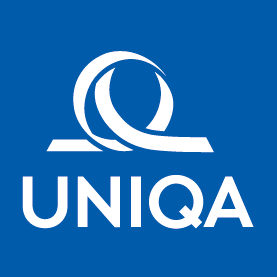39. Other disclosures
Employees
In € thousand |
1-12/2016 |
1-12/2015 |
Salaries and wages |
418,409 |
393,521 |
Expenses for termination benefits |
25,411 |
1,784 |
Pension expenses |
52,128 |
59,257 |
Expenditure on mandatory social security contributions as well as income-based charges and compulsory contributions |
108,663 |
105,772 |
Other social expenditures |
7,968 |
6,342 |
Total |
612,579 |
566,676 |
of which sales |
142,007 |
137,534 |
of which administration |
447,663 |
399,371 |
of which retirees |
22,909 |
29,772 |
|
31/12/2016 |
31/12/2015 |
||
|
||||
Total |
12,855 |
13,782 |
||
of which sales |
4,630 |
5,397 |
||
of which administration |
8,225 |
8,385 |
||
In € thousand |
1-12/2016 |
1-12/2015 |
||
|
||||
Expenses for defined benefit obligations amounted to: |
|
|
||
Members of the Management Board and Executives as defined by Section 80(1) of the Austrian Stock Corporation Act |
4,982 |
4,716 |
||
Other employees |
31,503 |
52,760 |
||
The active salaries of the members of the Management Board at UNIQA Insurance Group AG amounted to € 4,621 thousand in the reporting year (2015: € 3,498 thousand). Existing pension commitments to the members of the Management Board amounted to € 3,308 thousand (2015: € 681 thousand). The amount expended on pensions in the reporting year for former members of the Management Board and their survivors was € 815 thousand (2015: € 2,751 thousand).
The compensation to the members of the Supervisory Board for their work in the 2015 financial year was € 425 thousand. Provisions in the amount of € 470 thousand have been recognised for the remuneration to be paid for this work in the 2016 financial year. The amount paid out in attendance fees and cash expenditures in the financial year was € 77 thousand (2015: € 49 thousand).
There are no advance payments or loans to or liabilities for members of the Management Board and the Supervisory Board.
Share-based remuneration agreement with cash settlement
In the 2013 financial year, the UNIQA Group introduced a share-based remuneration programme for members of the Management Board of UNIQA Insurance Group AG (UIG) and for the members of the Management Board of UNIQA Österreich Versicherungen AG and UNIQA International AG. In line with this programme, qualified members of the Management Board were granted virtual UIG shares between 2013 and 2016, which give them the right to a cash payment after the end of the benefit period, provided certain targets are met, and maximum limits have been agreed. The programme stipulates an obligation to make an annual investment in UNIQA shares with a holding period of four years in each case. A total of 990,291 virtual shares had reached maturity at 31 December 2016.
Payment for the virtual shares is predicated on certain performance indicators having been met over a period of time equal to four financial years in each case.
Performance target 1
Total Shareholder Return (TSR = (Final quote – initial quote + dividends) : initial quote): average rank of the TSR of the UNIQA ordinary share among the companies managed in the DJ EuroStoxx TMI Insurance index during the performance period (market-based criterion for option grant).
Performance target 2
Return on Equity (ROE = profit/loss for the year : Equity at 31 December, “after non-controlling interests” when relevant): average rank of the ROE of UNIQA among the companies managed in the DJ EuroStoxx TMI Insurance index during the performance period (non-market-based criterion for option grant).
Performance target 3
Property and casualty insurance net combined ratio (CoR = sum of the net loss ratio and the net expense ratio in the IFRS consolidated financial statement): extent to which goals with respect to the targeted amount were achieved by the end of the performance period (non-market-based criterion for option grant).
Performance target 4
Return on Risk Capital (RoRC = annual profit/loss after taxes in relation to required equity): extent to which goals with respect to the targeted amount were achieved by the end of the performance period (non-market-based criterion for option grant).
Only performance targets 1 and 2 are to be considered for the performance period 2013–2016, each weighted 50 per cent. The degree of target achievement was determined as follows:
Rank |
TSR target |
RoRC target |
≤ 6 |
200 % |
200 % |
7 |
180 % |
180 % |
8 |
160 % |
160 % |
9 |
140 % |
140 % |
10 |
120 % |
120 % |
11 |
100 % |
100 % |
12 |
90 % |
90 % |
13 |
80 % |
80 % |
14 |
70 % |
70 % |
15 |
60 % |
60 % |
16 |
50 % |
50 % |
≥ 17 |
0 % |
0 % |
Performance targets 1, 3 and 4 will be considered for performance periods 2014–2017, 2015–2018 and 2016–2019, which are all worth a third of the total and may have a value no greater than 200 per cent and no less than 50 per cent. The calibration of TSR targets does not differ from the target calibration determined for the performance period 2013–2016. The following targets, which must be met by the end of the performance period, were set for performance targets 3 and 4, whereby meeting the target is assigned a target value of 100 per cent:
Relevant financial year |
CoR target |
RoRC target |
2017 |
97.5 % |
6.6 % |
2018 |
96.3 % |
8.3 % |
2019 |
95.3 % |
9.7 % |
The concrete degree of target achievement with respect to performance goal 3 was calculated as follows: Degree of target achievement = CoR’s change in ACTUAL compared to the previous year / planned changes to the CoR compared to the previous year = (x – Actual-CoR)/(Plan-CoR – Actual-CoR). The first year of a tranche’s performance period is taken to be the previous year. The degree of target achievement for performance goal 4 is calculated as follows: Degree of target achievement = Actual-RoRC : Plan-RoRC.
The payment amount in the first half of the year following the end of the performance period is calculated as the product of the following parameters (payment = A x B x C):
- A = Number of virtual shares awarded for the performance period. The virtual number of shares is calculated by dividing the total awarded volume per year in euros by UIG’s average share price in the six months prior to the first month of the financial year relevant to the performance evaluation. (For cases in which the authorised party dies before the performance period ends, the number of virtual shares will be reduced p.r.t. with respect to the performance period up to the date of death compared to the entire performance period.)
- B = Average insurance provisions share price. Valuation of virtual shares at the time of payment will be undertaken in each case with respect to UIG’s average share price in the six-month period prior to the end of the last month of the financial year relevant to the performance evaluation (daily close on trading days).
- C = Degree of target achievement. The degree of target achievement corresponds to the weighted degree of target achievement of the respective target value at the end of the performance period.
The fair value of share-based remuneration at the reporting date amounts to € 2,868 thousand (2015: € 531 thousand).
The obligations from share-based remuneration are stated under “Other provisions” (note 28) and are also included under the statements on “Related party transactions – individuals”.

